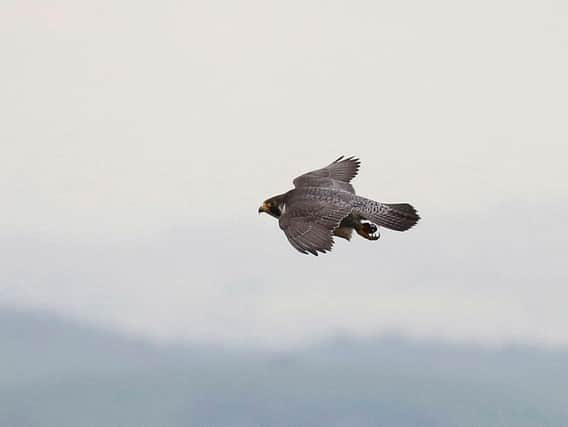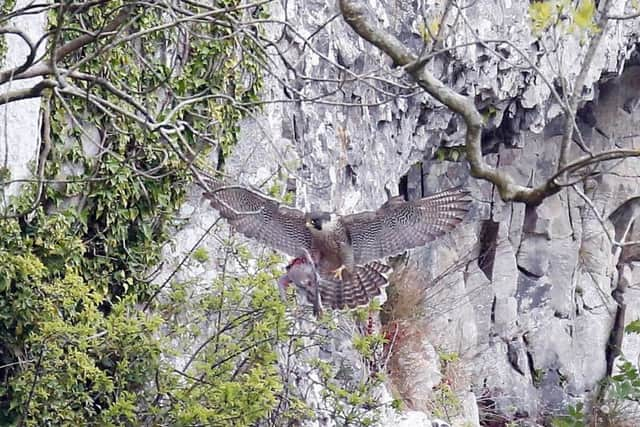Marvelling at Malham Cove’s nesting peregrine falcons requires more patience than Springwatch
This article contains affiliate links. We may earn a small commission on items purchased through this article, but that does not affect our editorial judgement.


How peregrine falcons set up home in YorkshirePeregrine numbers at a historic high, new study findsVulnerable chick gets a helping hand in YorkPeregrines have nested on this great horseshoe of limestone cliffs since 1993, rearing 60-odd chicks and seen by more than 250,000 people. Visitors usually require a bit of patience, though, because an hour can easily pass without much activity, which can come as a disappointment to anyone used to watching the edited footage of nesting birds like barn owls and ospreys shown on BBC Springwatch.
The lack of activity makes it quite a challenge for any schoolteacher who takes a class up there. Last week I overheard one trying to interest around 20 primary school pupils in the marvel of the peregrine as they sat on the limestone pavement at the top of the precipice.
Advertisement
Hide AdAdvertisement
Hide Ad“Does anyone know the name of the bird that is nesting over there?” he pointed across the cove to where three downy chicks were on a grass and ivy-covered ledge. “Vultures,” ventured one child. “Eagles,” said another.


The fifth answer finally produced the word peregrine, but just as the teacher was telling them about the bird’s extraordinary speed in flight - “it’s the fastest mammal on earth” - one small boy loudly reminded his classmates that Malham Cove had been a location in the film of J. K. Rowling’s Harry Potter and the Deathly Hallow. Interest in the birds was soon lost.
Down at Peregrine Watch on the floor of the cove, a steady stream of people arrived to use the three telescopes trained on the nest.
A female visitor expressed concern that two climbers seen on the cove’s 260ft walls might disturb the birds. “No, it’s okay,” she was reassured by one of the volunteers running the post.
Advertisement
Hide AdAdvertisement
Hide Ad“Climbers know to keep well away from the nest. The main pest we get up here is people coming to fly drones around the cove. They really spook the peregrines.”
In the hour I spent there the female peregrine was visible - though inactive - on the ledge, but there was no sign of the male.
From past experience, though, I knew he would eventually return with perhaps a jackdaw, a curlew or a woodpigeon to provide the chicks with their next meal.
Plenty of other peregrines are currently nesting under the public’s gaze around Yorkshire. At Wakefield Cathedral, for instance, a webcam has shown four chicks being fed on a diet which so far has included starlings, great spotted woodpeckers, nuthatches and even a lesser whitethroat.
Advertisement
Hide AdAdvertisement
Hide AdThere are also four chicks on the north face of York Minster, these ones receiving a menu of mainly feral pigeons, while on Scarborough’s Castle Cliffs a pair of peregrines have been feeding kittiwakes and other seabirds to an unknown number of young.
The Malham Peregrine Watch observation post is open between 10.30am to 4.30pm every day except Monday and Tuesday until the end of July.
Earlier this month the Yorkshire Dales National Park Authority reported that peregrine falcon chicks had hatched high up on the cove. It marks at least the 22nd time that a pair has hatched chicks at Malham since the birds returned to the spot in 1993.